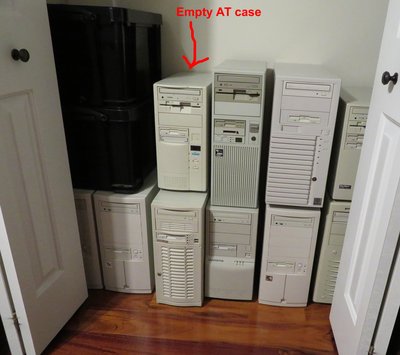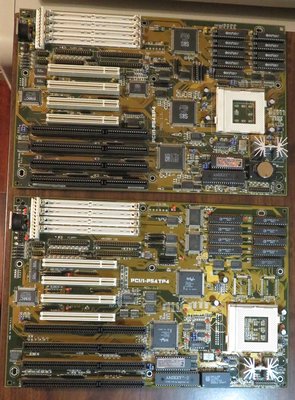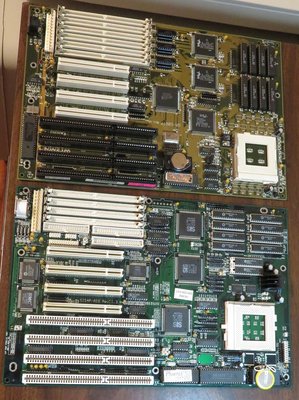First post, by feipoa
- Rank
- l33t++
I have an unpopulated AT computer tower that I thought would be suitable for a socket 5 build. The purpose of the build is merely to have a build of all the socket and slot platforms for my period of interest, which is the 386-PIII era, or approximately 1992-1999. I have four motherboards with a socket 5 and was wondering if anyone has experience with these and which they would pick for the build. I believe all the boards use direct-mapped SRAM cache.
The target cpu is likely to be an AMD K5-PR200 running at 133 MHz. My aim is to use the K5 in a socket 5 motherboard without an upgrade interposer module. Graphics card, which is another topic, will likely be a Riva TNT. Might even go Riva128+Voodoo2 if I can bother to troubleshoot my flakey Voodoo2 PCB.
The motherboard at hand are:
ASUS PCI/I-P54TP4 (430FX - Triton)
ASUS PCI/I-P54SP4 (SiS 501/502/503)
Gigabyte GA-586IP (430NX - Neptune)
Elitegroup SI54P AIO w/Phoenix BIOS (SiS 501/502/503)
I don't know if any of these boards will work with the K5 yet, but as I understand it, some socket5's could accept K5's.
As for the history of the boards - bought on eBay some years ago. They all are functional. One board was bought just because it had a 40 MHz FSB and would work with the original Cyrix 6x86-80, while others were purchased hoping they would work with the Cyrix 6x86-80 (before I found the one that works), and some I was hoping to get L2 cache working with a Pentium MMX Tillamock.
Nonetheless, they are here now and I'd like to select the best one for the project at hand. Any advice from someone more seasoned with these boards?
Plan your life wisely, you'll be dead before you know it.


